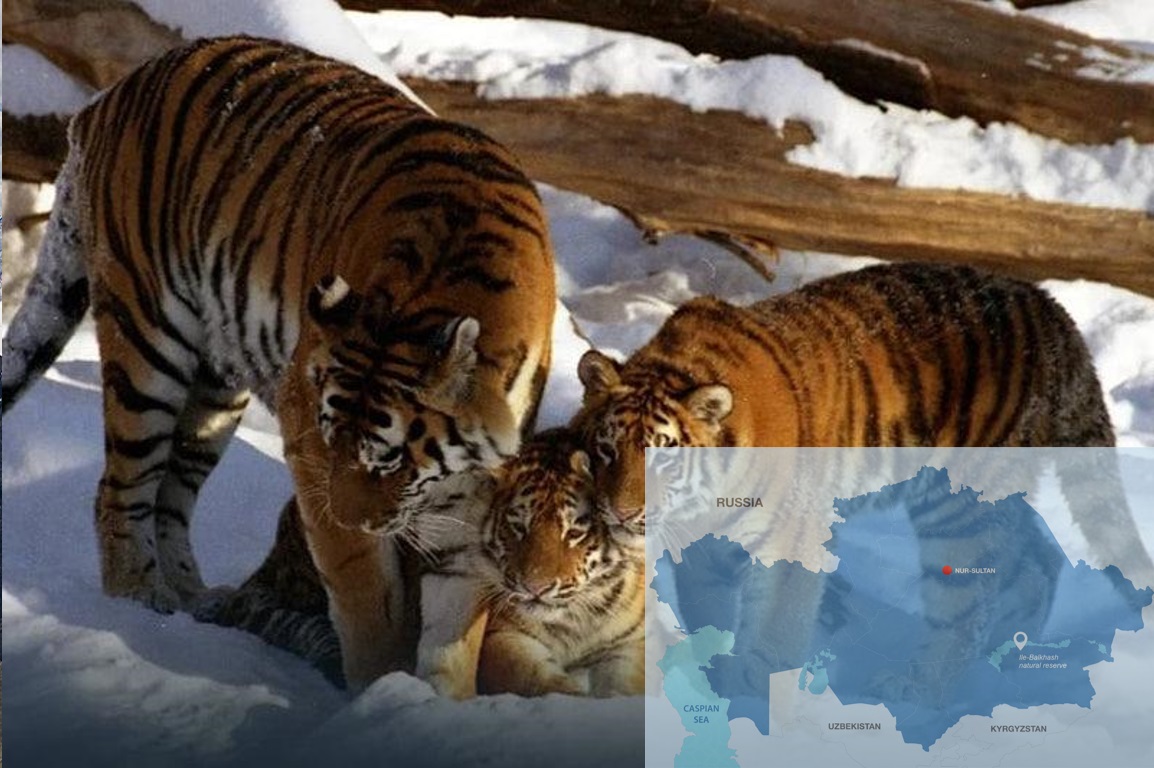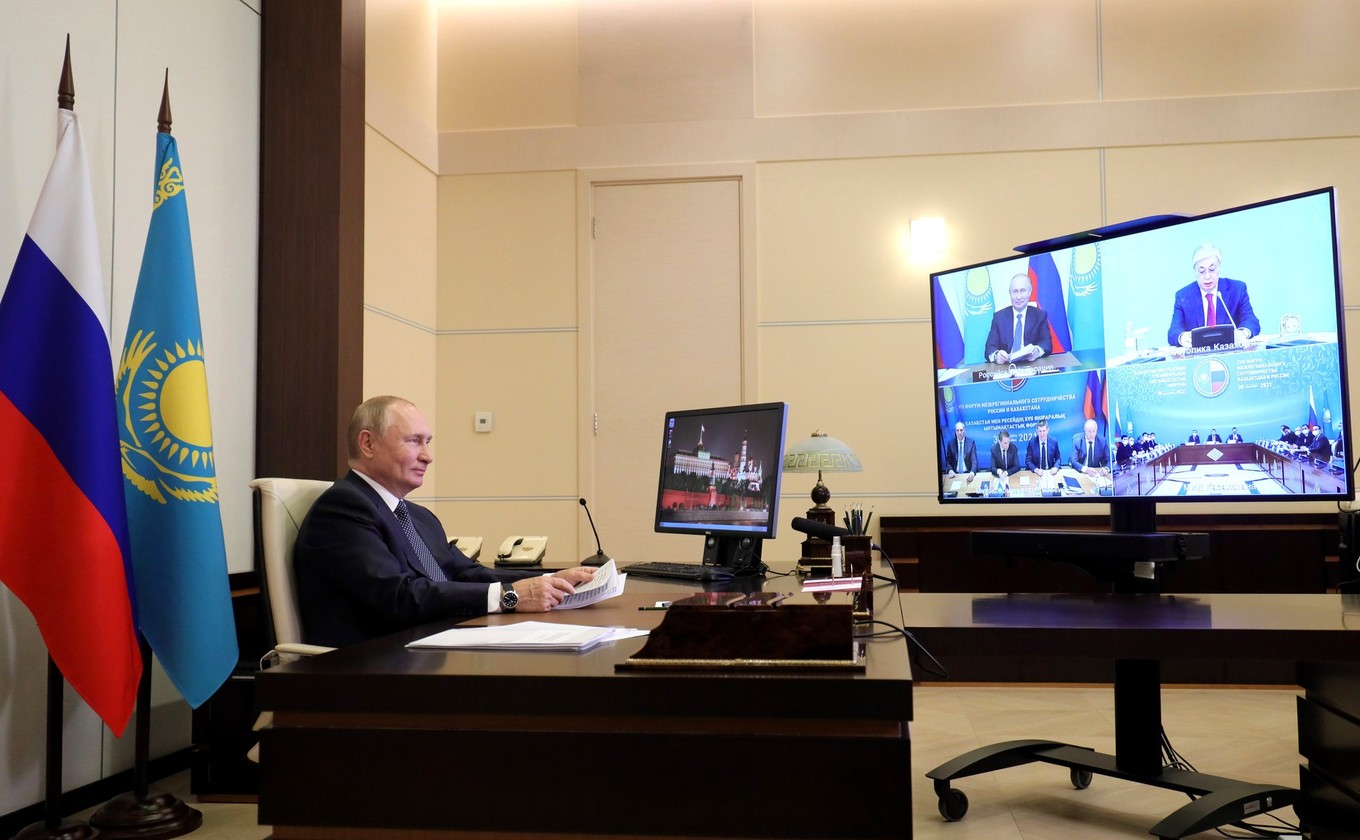NUR-SULTAN – Kazakhstan and Russia pledged their commitment to boost their efforts in reviving the population of wild tigers that once roamed the territory of Kazakhstan. That’s what President of Kazakhstan Kassym-Jomart Tokayev and President of Russia Vladimir Putin agreed on during their virtual Interregional Forum on Thursday.

Tigers. Photo credit: Kazakh Ministry of Ecology, Geology and Natural Resources. Click to see the map in full size.
The Kazakh-Russian Interregional Forum takes place annually to promote cooperation at all levels between the two countries. This year, the forum focused on the environment and green growth.
Reviving Turanian (Caspian) tigers has been on Kazakhstan’s agenda since 2010.
Turanian tigers disappeared in the 1970s, according to the World Wild Life Fund. They inhabited 13 countries in Central Asia, the Middle East, Transcaucasia, Turkey, and northwestern China.
“These are steppe tigers; in ancient times they were saber-tooth tigers. Consequently, we are now promoting an international project to restore the population of these tigers called the Turanian tigers,” said Tokayev inviting Russian specialists to take part in the project.
Scientists underline three main reasons behind the Turanian tiger’s extinction – targeted extermination during the Soviet period, uncontrolled hunting for ungulates, which were the tiger’s main prey, and the Soviet Union’s numerous irrigation projects that destroyed the tigers’ habitats.
“We will be happy to join in at the government level, and I think, at the expert level, too. Our specialists who have accumulated very good experience over the past few years will certainly find this interesting. We will be happy to share this experience, and to work together with you,” said Putin.

Putin addressing the meeting. Photo credit: Kremlin.ru
In November of 2020, the Kazakh Ministry of Ecology, Geology, and Natural Resources said it had finalized the restoration plan for Turanian tigers in Central Asia – a 15-year long program for the restoration of tigers on the southern shore of the Balkhash Lake and the region of the Ili River delta that together form the Ile-Balkhash Reserve spanning 415,000 hectares.
“Wild boar are found here in vast tugai woodlands and reed thickets (in these areas), and Bukhara deer could be reintroduced as well. The potential tiger habitat spans over 1 million hectares. Circumstantial historical evidence collected from hunting records and frequencies of encounters show that the Caspian tiger population density in Central Asia was much higher than that of the Amur tiger and was similar to tiger densities in India,” said the report prepared by the WWF Russia that cooperated with Kazakhstan on the tiger restoration project since 2017.
The total area suitable for the tigers’ habitat is more than one million hectares and that’s what Kazakh Minister of Ecology, Geology, and Natural Resources Serik Brekeshev confirmed at the forum.
Once the reserve’s ecosystem is ready to sustain a viable tiger population, which includes a plan to stop poaching and prevent banned natural resource use activities as well as increase the number of prey species, the WWF Russia and the government will bring Amur tigers there. Amur tigers are known to have a close genetic similarity with Turanian tigers.
This, however, will happen no earlier than 2024. According to forecasts, the population can reach 100 to 200 tigers.

